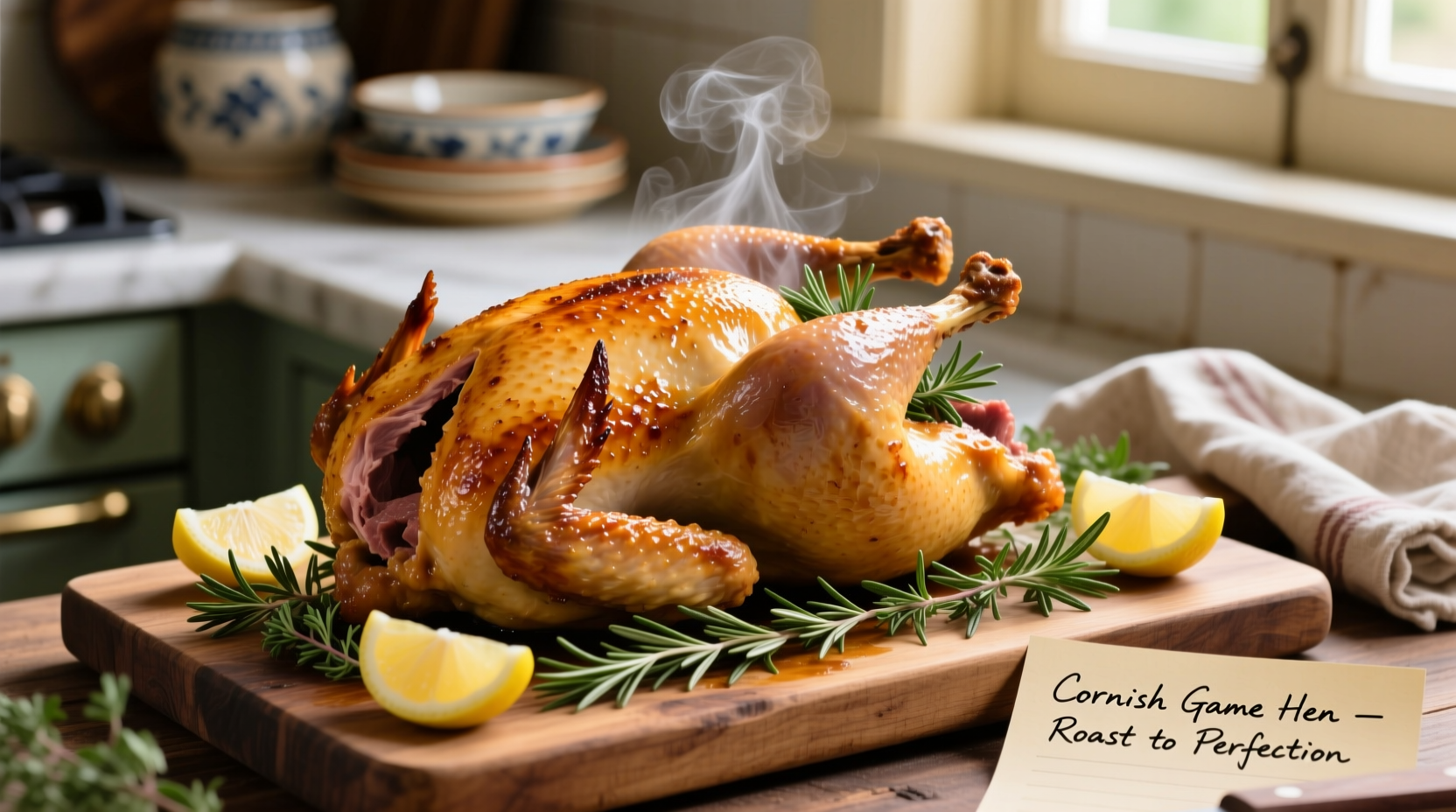Cornish game hens are best roasted at 375-400°F for 45-55 minutes until the internal temperature reaches 165°F in the thickest part of the thigh. Properly cooked Cornish game hens yield tender, juicy meat with perfectly crispy skin—ideal for an impressive yet manageable meal for 1-2 people per bird.
The Complete Guide to Perfectly Roasted Cornish Game Hens
Cornish game hens aren't actually game birds—they're young chickens bred specifically for their small size and delicate flavor. Weighing 1-2 pounds each, these miniature poultry portions cook faster than regular chickens but require precise temperature control to avoid dryness. This guide delivers restaurant-quality results with straightforward techniques you can master in your home kitchen.Why Cornish Game Hens Deserve Special Cooking Attention
Unlike standard chickens, Cornish game hens have less fat and connective tissue. Their petite frames mean heat penetrates quickly, making timing critical. Undercook them and you risk food safety issues; overcook them and the lean meat becomes tough. The USDA Food Safety and Inspection Service confirms poultry must reach 165°F internally, but achieving this without drying out these small birds requires specific techniques.Preparation Essentials: Setting Up for Success
Selection and Thawing Choose plump birds with unbroken skin and no discoloration. If frozen, thaw in the refrigerator for 24-48 hours—never at room temperature. Proper thawing prevents bacterial growth while maintaining texture. Dry Surface = Crispy Skin After rinsing (optional, but if you do, pat thoroughly dry), place hens on a wire rack over paper towels in the refrigerator for 4-12 hours. This air-drying process removes surface moisture, the #1 secret to golden, crackling skin. Room Temperature Start Remove hens from refrigerator 30-45 minutes before cooking. Cooking cold birds leads to uneven results—the skin burns before the interior cooks through.
Flavor Enhancement Techniques That Make a Difference
Dry Brine for Maximum Juiciness Rub 1/4 teaspoon kosher salt per pound under the skin and on the surface 12-24 hours before cooking. This simple step, recommended by culinary professionals at the Culinary Institute of America, seasons deeply and helps retain moisture during cooking. Herb Butter Under the Skin Gently loosen the skin over the breast and thighs, then massage a compound butter (try rosemary-thyme or lemon-garlic) directly onto the meat. This technique delivers flavor where it matters most while protecting the delicate flesh. Strategic Trussing Tie legs together with kitchen twine to promote even cooking. Unlike larger birds, Cornish hens don't require wing tucking—their small size prevents burning.Optimal Cooking Methods Compared
| Cooking Method | Temperature | Time (1.5lb hen) | Best For |
|---|---|---|---|
| Oven Roasting | 375-400°F | 45-55 minutes | Classic crispy skin results |
| Grilling | Medium indirect heat | 35-45 minutes | Smoky flavor profile |
| Air Frying | 375°F | 30-40 minutes | Ultra-crispy skin, faster cooking |











 浙公网安备
33010002000092号
浙公网安备
33010002000092号 浙B2-20120091-4
浙B2-20120091-4